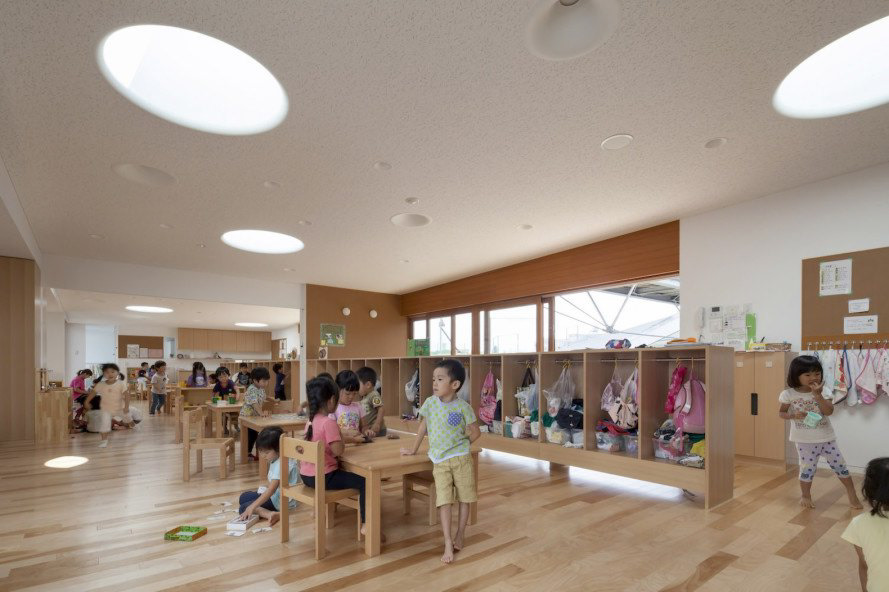from studio feedback and reflection, the chairs were overwhelming in colour and should act as accents. there is a real opportunity to tie in colours and colour code. therefore i have redesigned the chairs with functionality in mind. each chair is colour coded with the bauhaus colours in blocks but this time far more restrained and mature. they appear on the back rest which is noticeable as an accent and obvious to children. i also took inspiration from japanese and scandinavian nurseries with the same wood being implemented into the chairs making them look softer and more child friendly.
the colours are placed the furthest away from each other, diagonally from each table block. this is done with the idea that each colour group will go to hang up their items on their own colour coat hook. each group being far away means children have the most space and do not get caught up with each other, bumbling around.



making the benches in the hall white takes the focus from the overwhelming rietveld colours and back to the stage, the only wooden aspect and form in the room.
from feedback in studio, the black boarders around colour blocks was too much, hence i have reduced the thickness to 50mm which is the same as the white.
white inadvertadly actually had the opposite effect. it drew attention to itself. therefore, i decided to make the table tops wooden and then incorporate the same colour coding system, with each colour in each row. i am also debating using the same tables and chairs as the classrooms instead for the hall as i remember when i was in primary school, the same style of tables and chairs were used throughout the classrooms and hall and eating areas. this setup still is able to be stored in the same store room and fits fine.
i feel that this gives more flexibility and therefore makes more sense, the chairs can be brought out of storage separate from the tables for stage viewings or arranged in circles for group activities etc. they are less bulky, more consistent, modular and more versatile.